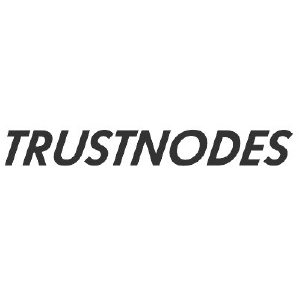Ethereum: Shocking $380M ETH Exodus from CEXs – What it Means for the Crypto Market
8 min read
A significant shift is happening in the world of cryptocurrency, particularly concerning Ethereum (ETH). Recent data from IntoTheBlock reveals a staggering net outflow of approximately $380 million worth of Ethereum (ETH) from Centralized Exchanges (CEXs) over the past seven days. This substantial movement of assets away from platforms like Coinbase, Binance, and Kraken isn’t just a number; it’s a strong signal that could have meaningful implications for the entire Crypto Market . Why Are Investors Moving Ethereum (ETH) Off CEXs? The decision to withdraw assets from a Centralized Exchange (CEX) is often a deliberate one, driven by various factors related to security, control, and investment strategy. When we see large ETH Outflows like the $380 million figure reported, it suggests a collective action among a significant portion of Ethereum (ETH) holders. But what exactly prompts this move? Seeking Self-Custody: One of the primary reasons is the desire for greater control and security. Holding Ethereum (ETH) in a non-custodial wallet (like a hardware wallet or a software wallet where the user holds the private keys) removes counterparty risk associated with exchanges. If a CEX faces hacks, regulatory issues, or solvency problems, user funds can be at risk. Self-custody puts the user in complete control of their assets. Participation in Decentralized Finance (DeFi): The Ethereum network is the backbone of a vast DeFi ecosystem. To interact with decentralized applications (dApps), provide liquidity, yield farm, or borrow/lend assets on platforms like Uniswap, Aave, or MakerDAO, users typically need to connect a non-custodial wallet. Moving Ethereum (ETH) off a CEX is a necessary step to engage in these activities. Staking ETH: With the Merge and subsequent upgrades, staking Ethereum (ETH) to earn rewards has become a popular option. While some CEXs offer staking services, many users prefer to stake directly through decentralized protocols (like Lido or Rocket Pool) or run their own validators for potentially better returns, more control, or to support decentralization. This requires moving ETH out of the exchange environment. Long-Term Holding (HODLing): Investors who plan to hold their Ethereum (ETH) for extended periods often feel more comfortable storing it offline in cold storage or hardware wallets. This minimizes the temptation to trade impulsively and provides a higher level of security against online threats targeting exchanges. Large outflows can indicate strong long-term conviction among holders. Privacy Concerns: While CEXs require KYC (Know Your Customer) information, self-custody wallets offer a degree of privacy, as transactions are recorded on the public blockchain but not directly tied to a user’s real-world identity unless they interact with regulated services. The scale of these recent ETH Outflows suggests that a combination of these factors is likely at play, indicating a growing preference for decentralized activities and self-custody among Ethereum (ETH) holders. Understanding ETH Outflows and Their Significance Through On-Chain Data On-Chain Data provides a transparent window into the movements of cryptocurrencies on their respective blockchains. Tools like those offered by IntoTheBlock analyze this data to track flows into and out of entities like exchanges, whales, and smart contracts. The net change in assets held on Centralized Exchanges (CEXs) is a key metric derived from On-Chain Data , and it offers valuable insights: When there are significant ETH Outflows from CEXs, it typically means: Reduced Selling Pressure: Assets held on exchanges are generally considered more liquid and readily available for trading or selling. When a large amount of Ethereum (ETH) leaves exchanges, the immediate supply available for selling on these platforms decreases. This can potentially reduce selling pressure in the short to medium term. Indicator of Accumulation: Large outflows often coincide with periods where investors are accumulating assets for long-term holding or use in DeFi/staking, rather than keeping them on an exchange for potential quick sale. This can be interpreted as a bullish signal, reflecting strong holder conviction. Increased Activity in Decentralized Ecosystems: Outflows can precede or coincide with increased activity in the DeFi and staking sectors, as users move their Ethereum (ETH) to participate in these decentralized protocols. Conversely, net inflows to exchanges can sometimes signal potential increased selling pressure or a shift from decentralized activities back to centralized trading platforms. Monitoring these trends through On-Chain Data is crucial for understanding broader market sentiment and potential future price movements in the Crypto Market . Impact on the Crypto Market: What $380M in ETH Outflows Could Mean The withdrawal of $380 million worth of Ethereum (ETH) from Centralized Exchanges (CEXs) in just seven days is a substantial event for the Crypto Market . To put it in perspective, this represents a significant portion of the liquid supply readily available for trading on these major platforms. Here’s how it could impact the market: Potential Price Implications: Reduced Supply, Increased Scarcity: With less Ethereum (ETH) sitting on exchanges, the available supply for buyers to purchase directly from these platforms decreases. If demand remains constant or increases, reduced supply can lead to upward pressure on the price. Indicator of Bullish Sentiment: As mentioned, large outflows are often associated with accumulation and long-term holding. This behavior reflects confidence in Ethereum (ETH) ‘s future price potential, contributing to positive market sentiment. Liquidity Shifts: While liquidity on CEXs might decrease, it could potentially increase in decentralized liquidity pools (on DEXs like Uniswap) as users move their ETH into DeFi. However, overall ease of buying/selling large amounts on centralized order books might be affected. Broader Market Signals: Growing Adoption of Decentralization: The trend of moving assets off CEXs highlights the increasing comfort and willingness of users to engage directly with the decentralized aspects of the Crypto Market , whether through self-custody, DeFi, or staking. Maturity of the Ecosystem: The fact that such large values are being moved off exchanges smoothly demonstrates the increasing robustness and usability of non-custodial wallets and decentralized protocols. While outflows don’t guarantee a price increase, they are historically viewed as a potentially bullish indicator due to the reasons outlined above. It signals that a large amount of Ethereum (ETH) is being moved into positions less likely to be sold in the immediate future. The Shift Towards Self-Custody: Benefits and Challenges for Ethereum (ETH) Holders The trend of substantial ETH Outflows from Centralized Exchanges (CEXs) underscores a growing movement towards self-custody. This involves users taking direct control of their private keys, and thus their Ethereum (ETH) , outside of a third-party platform. Let’s look at the benefits and challenges: Benefits of Self-Custody: True Ownership: You hold the private keys, meaning you have absolute control over your Ethereum (ETH) . No exchange downtime, withdrawal limits, or account freezes can prevent you from accessing your funds. Enhanced Security (When Done Correctly): While CEXs are targets for hackers, self-custody wallets, especially hardware wallets, offer robust security against online theft if best practices are followed (like securing your seed phrase). Access to DeFi and Staking: As discussed, self-custody is essential for participating in the vibrant Ethereum DeFi ecosystem and staking your ETH directly on the network or via decentralized protocols to earn rewards. Privacy: Transactions are pseudonymous on the blockchain, offering more privacy compared to KYC-verified accounts on CEXs. Challenges of Self-Custody: Full Responsibility: There is no customer support if you lose your private keys or seed phrase. Losing access means losing your Ethereum (ETH) forever. This is the biggest challenge. Complexity: Setting up and securely managing non-custodial wallets, especially hardware wallets, can be more complex than using a CEX account, particularly for beginners. Transaction Costs: Interacting with the Ethereum network (sending ETH, using dApps) requires paying gas fees, which can sometimes be high depending on network congestion. Risk of User Error: Sending funds to the wrong address or falling victim to phishing scams if not vigilant are risks inherent in managing your own keys. Here’s a simplified comparison: Feature Centralized Exchange (CEX) Self-Custody Wallet Key Management Exchange holds keys User holds keys Control Limited (subject to exchange rules) Complete Security Exchange’s responsibility (risk of hacks, insolvency) User’s responsibility (risk of lost keys, user error; high security with hardware wallets) Access to DeFi/Staking Limited (often simplified services) Full (direct interaction with protocols) Ease of Use Generally easier for beginners Can be more complex The large ETH Outflows suggest that a growing number of users are weighing these factors and opting for the control and opportunities offered by self-custody, despite the added responsibility. Actionable Insights from On-Chain Data for the Crypto Market Tracking metrics like ETH Outflows from Centralized Exchanges (CEXs) using On-Chain Data provides valuable insights for anyone involved in the Crypto Market . What can you do with this information? Monitor Exchange Balances: Keep an eye on the total amount of Ethereum (ETH) held on exchanges. Sustained decreases can signal reduced selling pressure and potential bullish momentum. Tools from providers like IntoTheBlock or Glassnode can help track this. Analyze Outflow Destination: While difficult to pinpoint the exact wallet every time, On-Chain Data can sometimes show if outflows are going to known DeFi protocols, staking addresses, or newly active wallets, giving clues about the holders’ intentions (e.g., staking vs. pure storage). Combine with Other Metrics: Don’t look at ETH Outflows in isolation. Combine this data point with other On-Chain Data metrics such as network activity, transaction volume, stablecoin flows, and whale movements for a more comprehensive market picture. Assess Market Sentiment: Large, consistent outflows often reflect strong underlying conviction among long-term holders, which can be a positive sign for overall market sentiment regarding Ethereum (ETH) . Inform Your Strategy: Understanding these macro-level movements can help inform your own investment strategy. For example, sustained outflows during a price dip might indicate strong accumulation interest. The $380 million in recent ETH Outflows serves as a prime example of how On-Chain Data can highlight significant trends impacting the Crypto Market and specific assets like Ethereum (ETH) . Conclusion: What the Shocking ETH Exodus Signifies The recent data showing a shocking $380 million net outflow of Ethereum (ETH) from Centralized Exchanges (CEXs) over the past week is a powerful indicator. It highlights a significant shift in holder behavior, moving away from keeping assets readily available for trading on exchanges towards self-custody, participation in decentralized finance, and staking. This trend, visible through the lens of On-Chain Data , suggests strong conviction among Ethereum (ETH) holders and a potential reduction in immediate selling pressure on CEXs. For the broader Crypto Market , it underscores the growing maturity and adoption of decentralized alternatives and could be interpreted as a bullish signal for Ethereum (ETH) as more supply moves into longer-term or utility-driven holdings. To learn more about the latest Ethereum (ETH) and Crypto Market trends, explore our articles on key developments shaping Ethereum (ETH) price action and institutional adoption.

Source: Bitcoin World



